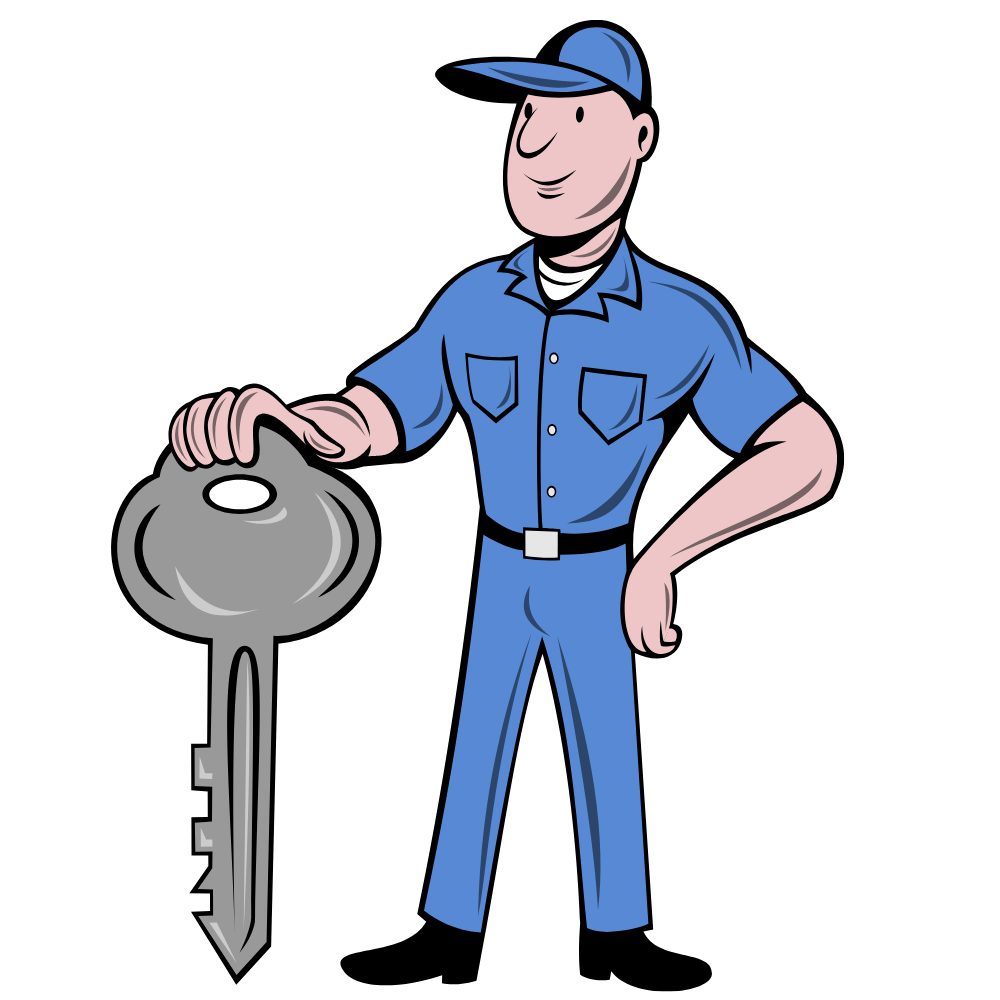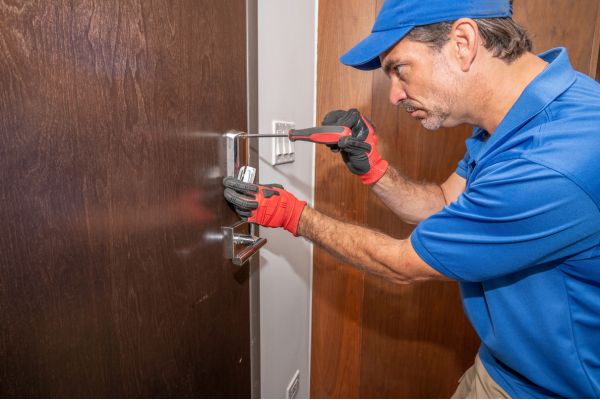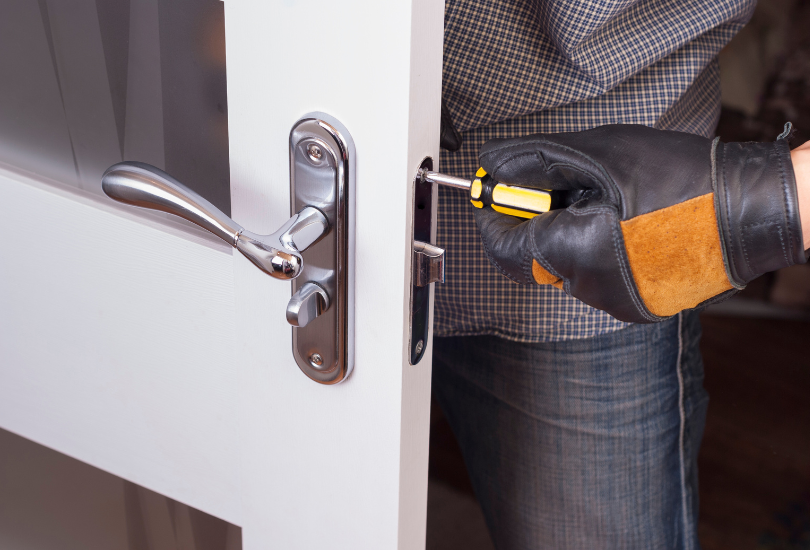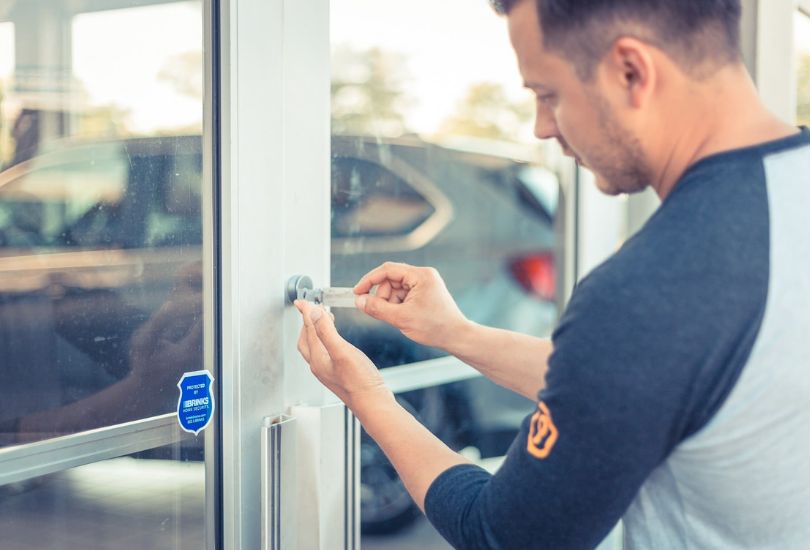Finding yourself stuck with a broken key in the lock is a situation nobody wants to be in. Whether it’s your home, office, or car lock, the inconvenience and potential safety risk can be significant. In this guide, we’ll walk you through the best methods to safely remove the broken key, how to assess the condition of your lock, and when it’s time to call a professional.
Don’t Force It
Your immediate instinct might be to force the remaining part of the key out by using pliers or by jamming the other part of the key back into the lock. Resist the urge! This could cause further damage to the lock and make it difficult for you to extract the broken part.
Use Proper Tools
For minor cases, using simple household tools can be effective. Needle-nose pliers or tweezers can help you grip the protruding part of the key and carefully slide it out. Flat-head screwdrivers may also be useful to provide a little leverage—but be gentle.
Try a Key Extractor
For a more sophisticated approach, you might consider using a broken key extractor. This tool is specifically designed for this kind of predicament. It’s slender and comes with ‘teeth’ to grip onto the broken part of the key, allowing for easy extraction. Key extractors are often sold in hardware stores and can be a valuable addition to your toolkit.
Tap the Lock
Another trick is to tap the lock lightly with a hammer. Sometimes the vibration can cause the broken piece to dislodge just enough for you to grasp it with pliers. Be careful not to tap too hard, as you risk causing more damage.
Call a Professional Locksmith
If you’ve tried all the above methods without success, it’s time to call a professional locksmith. A certified locksmith possesses the right tools and expertise to handle such issues efficiently, often without damaging the lock. They can also provide you with a new key on the spot and even offer to install a new lock if needed.
Preventive Measures
The best solution is, of course, prevention. Regularly inspect your keys for wear and tear and replace them before they break. Use graphite lubricant on your locks to keep them operating smoothly, thus reducing the stress on your keys.
Conclusion
A Broken Key in the Lock can disrupt your entire day. While it may seem like a daunting issue to fix, there are multiple solutions available. From using household tools to employing a key extractor, you can try a variety of methods. However, when all else fails, calling a professional locksmith is your best bet. They can resolve the issue promptly and efficiently, getting you back into your home, car, or office without further ado.
We hope this guide helps you in dealing with a Broken Key in the Lock situation. For professional locksmith services, don’t hesitate to reach out to us. We’re here to offer you quick and effective solutions for all your lock and key troubles.
Keywords: broken key, locksmith, lock, key extractor, professional locksmith, household tools, preventive measures, Broken Key in the Lock, proper tools, effective solutions
What to Do When You Have a Key Snapped in the Lock: Expert Tips from Your Trusted Locksmith
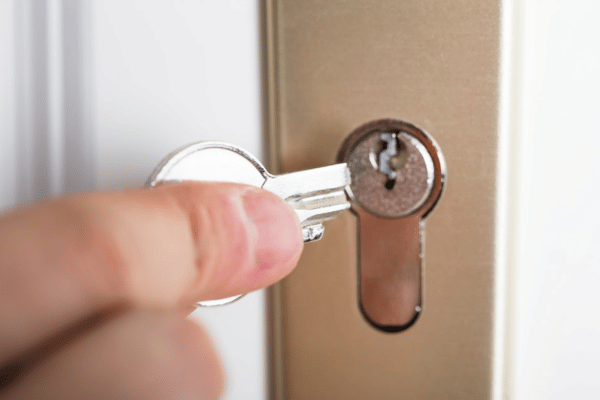
It’s a situation you’d rather not find yourself in, but it happens: you’re either in a rush or distracted, and your key snaps off, leaving a piece of it inside the lock. This can be both frustrating and concerning, especially if it compromises your security. But worry not—solutions are at hand! This article aims to guide you on what immediate steps you should take when you have a key snapped in the lock.
Stay Calm and Assess the Situation
Firstly, do not panic. Take a deep breath and assess the situation. Trying to forcibly remove the broken piece can worsen the issue, potentially damaging the lock and making the extraction process even more complicated.
Do Not Attempt to Lock or Unlock
Avoid the urge to use another key or the snapped piece to lock or unlock the door. This will likely push the broken piece further into the lock, making it more challenging to remove.
Use Tools at Hand for DIY Extraction
Sometimes, the broken piece is protruding enough for you to grip it with a pair of pliers. If this is the case, gently try to pull it out. Needle-nose pliers are often the most effective for this. Alternatively, you can use a flathead screwdriver to try and turn the key to its original position, aligning it with the lock, and then pull it out.
Lubricate the Lock
If the key isn’t budging, you can use a silicone-based lubricant or graphite spray to make the extraction easier. Apply the lubricant carefully into the lock around the key piece, and then try to remove the key fragment using pliers again.
Consider a Professional Service
In many cases, especially when DIY methods fail or you’re worried about causing further damage, it’s better to call in the professionals. A skilled locksmith has specialized tools and the expertise to safely extract the broken piece from the lock without causing any further damage.
Why Choose Our Locksmith Services?
When you’re stuck with a snapped key, our certified and experienced locksmiths are just a call away. Our services offer:
- Quick Response Time: Our professionals can reach you quickly, saving you from prolonged stress and inconvenience.
- Advanced Tools: We use state-of-the-art tools that can extract snapped keys efficiently, ensuring that your lock remains in perfect working condition.
- 24/7 Availability: Locked situations don’t always happen during convenient hours. That’s why we’re available 24/7 to offer emergency locksmith services.
- Affordable Rates: Quality service doesn’t have to be expensive. We provide top-notch service at competitive rates.
- Expert Advice: Once the Broken Key in the Lock is extracted, our locksmith can help you decide whether your existing lock is worth keeping or if it’s time for a replacement.
Having a key snap in your lock can be stressful, but with the right approach, it doesn’t have to be a crisis. Whether you opt for a DIY extraction or decide to call our expert locksmiths, knowing what to do can save you time, money, and a great deal of hassle.
What to Do When You Have a Key Blocked in the Lock
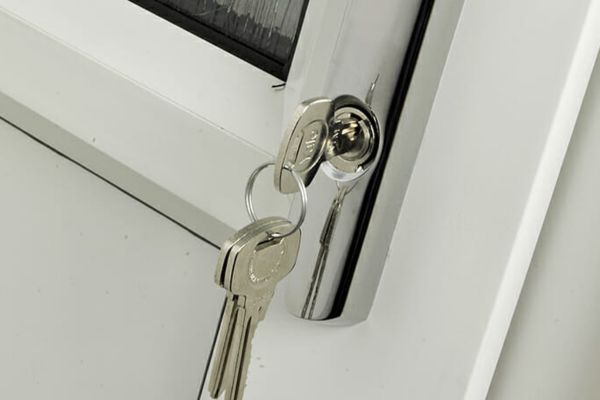
Getting a key stuck in a lock can be an unnerving experience, leaving you wondering how to resolve the issue without damaging your property. Whether you’re dealing with a blocked key at home, at your office, or in your car, it’s essential to handle the situation carefully to avoid causing any further problems. In this article, we will explore effective steps to take when you find your key blocked in a lock, as well as when you should call in professional locksmith services for assistance.
Don’t Force It
The first instinct may be to use brute force in the hopes that you can dislodge the stuck key. However, exerting excessive pressure can make the situation worse by breaking the key, leaving a portion of it inside the lock mechanism. Gently wiggle the key back and forth to see if it will come out smoothly.
Lubricate the Lock
One of the most common reasons for a key getting stuck is a lack of lubrication within the lock. Spraying a silicone-based lubricant can help in such cases. Insert the nozzle of the lubricant spray into the keyhole and give it a good spray. Wait a minute or two and then try to remove the key again.
Use Pliers
Sometimes, a good pair of needle-nose pliers can give you the extra grip you need to pull out a stuck key. Make sure you’re not using too much force, as that could snap the key. If the key isn’t budging even after using pliers, it’s best to stop and seek professional help.
Check the Door and Bolt
Sometimes the issue might not solely be with the key or the lock, but with the door or bolt alignment. Ensure the door is properly aligned and fully open or closed, as required, to relieve any pressure on the lock and key.
Call a Professional Locksmith
If all else fails, or if you’re not comfortable attempting these methods yourself, it’s time to call in the experts. A professional locksmith has specialized tools and expertise to handle any lock and key issues, including extracting blocked keys without damaging the lock.
Why Choose Us for Your Locksmith Needs?
At [Your Company Name], we offer speedy and reliable services to resolve any lock and key issues you may face. Whether it’s a blocked key, a lockout situation, or you need new locks installed, we are just a call away. With years of experience, state-of-the-art tools, and a commitment to customer satisfaction, we are your go-to solution for all things lock and key. Contact us today for immediate assistance.
Conclusion
A key blocked in the lock is an inconvenience that can happen to anyone, but with the right approach, it’s often a simple issue to resolve. Remember not to force the key, lubricate the lock, and when in doubt, consult with a professional locksmith. At [Your Company Name], we are dedicated to helping you secure your property in the most effective way possible. Give us a call today to find out how we can assist you.
What to Do When the Key Doesn’t or Won’t Turn the Lock: Expert Tips from a Locksmith
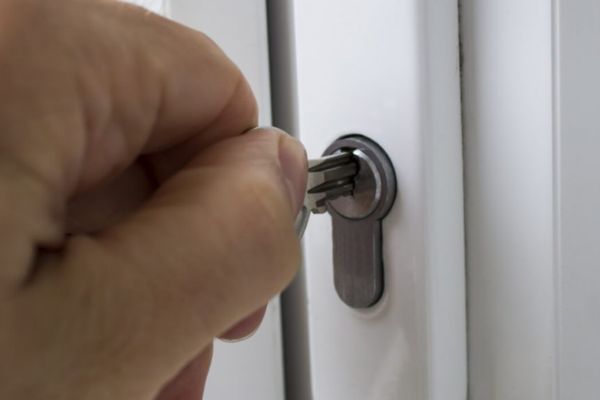
It’s a situation that can leave anyone frustrated and panicked: you insert your key into the lock, and it refuses to turn. Whether it’s your front door, car, or office, a malfunctioning lock can disrupt your day and leave you feeling insecure. So what should you do when your key doesn’t or won’t turn the lock? Here are some expert tips from a professional locksmith to guide you through these stressful moments.
Check the Basics First
Before you jump to any conclusions, make sure you’re using the correct key and that you’ve inserted it all the way. It may sound trivial, but sometimes the simplest explanations are the correct ones.
Apply Lubricant
Locks can seize up due to a lack of lubrication, especially in cold weather or in older mechanisms. Use a silicone-based lubricant to free up the tumblers. Spray the lubricant into the keyhole and then insert and remove the key a few times to distribute the lubricant.
Adjust the Key Angle
Sometimes, jiggling the key a little or adjusting its angle can help align the lock’s internal components. This could allow the key to turn. However, be cautious while doing this; applying too much pressure could snap the key inside the lock, making the problem even worse.
Examine the Lock for Obstructions
Debris or foreign objects can sometimes obstruct the lock mechanism. Shine a flashlight into the keyhole to check for any obstructions. If you spot something, use a pair of tweezers or a thin piece of wire to remove it.
Check Door and Lock Alignment
For door locks, misalignment between the door and the frame could be causing issues. If the door is sagging or the latch bolt is not lining up correctly, it could prevent the key from turning. Try pushing or pulling the door while turning the key to see if that solves the problem.
Tap Lightly
Sometimes, a light tap using a hammer, or a similar object can help realign the internal components of the lock. Tap lightly while the key is inserted into the lock; this might be enough to allow the key to turn.
When to Call a Professional Locksmith
If you’ve tried all the above steps and the key still won’t turn, it’s time to consult a professional locksmith. They have specialized tools and expertise to diagnose and fix the issue, whether it involves rekeying, lock replacement, or repair. It’s crucial to act quickly to secure your property and have peace of mind.
Conclusion
A key that won’t turn can be more than an inconvenience; it can be a security risk. Knowing what to do in these situations is crucial. From lubricating the lock to aligning its components, these tips could save you time and stress. However, for stubborn locks or recurring issues, it’s always best to consult a professional locksmith. They can provide a comprehensive solution that will keep your locks functioning smoothly, ensuring that you never have to deal with a stuck key again.
Don’t let a stubborn lock disrupt your life. Follow these expert tips and know when to call a professional to resolve the issue efficiently and securely.
What to Do When the Key Doesn’t Turn Your Multi-Point Mechanism on a UPVC Door
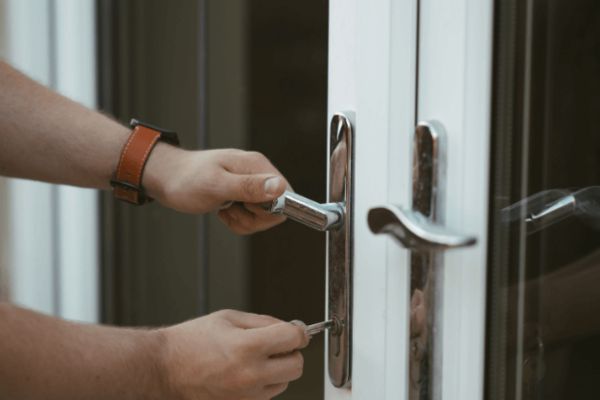
If you’ve encountered a situation where your key won’t turn in the multi-point locking mechanism of your uPVC door, you’re not alone. uPVC doors are popular due to their durability and high-security features, but like all doors, they can present challenges over time or due to incorrect usage. In this article, we’ll go over some practical steps to take if you find yourself in this predicament and provide guidance on when to call a professional locksmith.
Check for Obstructions
Firstly, make sure there are no obstructions in the keyway or around the door frame. Sometimes, dirt, debris, or even ice can prevent the key from turning. A quick cleaning could solve the problem without requiring any further intervention.
Lubricate the Lock
Over time, the internal mechanisms of a lock can become dry, making it difficult to turn the key. Try applying a non-sticky lubricant like graphite powder or a silicone-based lubricant into the keyway. Insert the key and attempt to turn it gently a few times. Do not force it, as you risk breaking the key.
Examine the Key and Lock
Inspect the key for signs of wear, damage, or bending. A damaged key can struggle to engage the lock correctly. If you have a spare key, attempt to use it to eliminate the possibility that the key itself is the issue.
Realign the Door
If the door is misaligned, the multi-point mechanism might not engage properly. You can check this by examining the gaps between the door and the frame. If they appear uneven, you might need to adjust the door hinges or the keeps on the door frame where the multi-point hooks engage.
Turn the Handle Upwards
Some uPVC doors require lifting the handle upwards to engage the multi-point locking mechanism before the key can be turned. If you’ve been neglecting this step, the key won’t turn.
Consult Your Manual
If you have the user manual for your uPVC door, consult it for any specific troubleshooting tips for your model. Manufacturers often provide useful information for dealing with common issues.
When to Call a Locksmith
If none of these DIY solutions work, it’s time to call a professional locksmith. A trained technician can identify and fix the problem efficiently, whether it requires replacing the cylinder, adjusting the alignment, or even upgrading the multi-point mechanism for better security.
Why Choose London Locksmiths for Your Locksmith Needs?
At London Locksmiths LTD we specialize in dealing with all sorts of uPVC door problems, including stubborn multi-point mechanisms that won’t unlock. Our certified technicians are just a call away and can provide emergency services to ensure your safety and peace of mind.
Don’t let a sticky lock keep you out of your home. Contact us for fast and reliable locksmith services.
By addressing these key points (pun intended), you’ll be better prepared to deal with a key that won’t turn in your uPVC door’s multi-point locking mechanism. When in doubt, don’t hesitate to seek professional help to resolve the issue effectively and safely.


